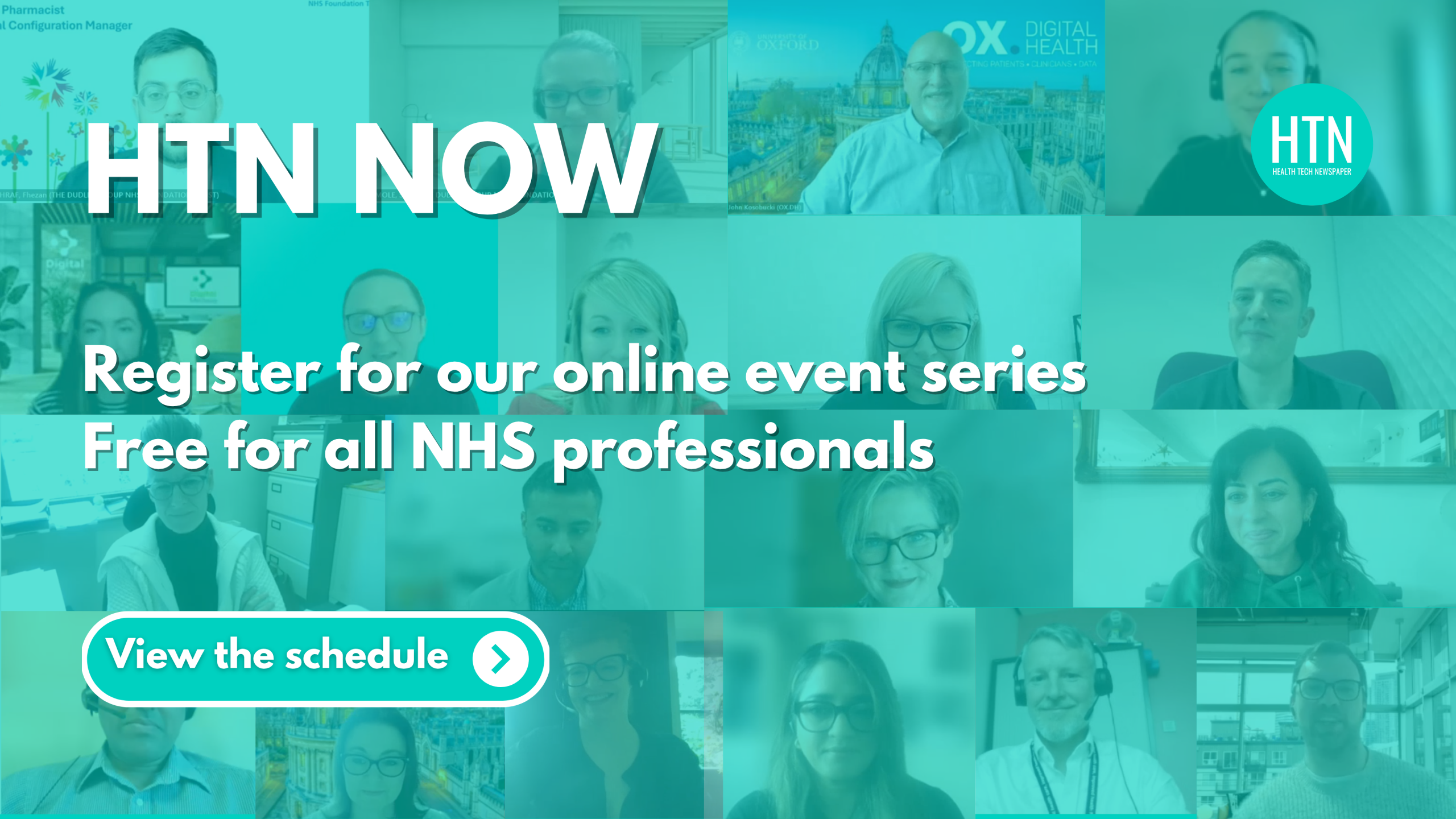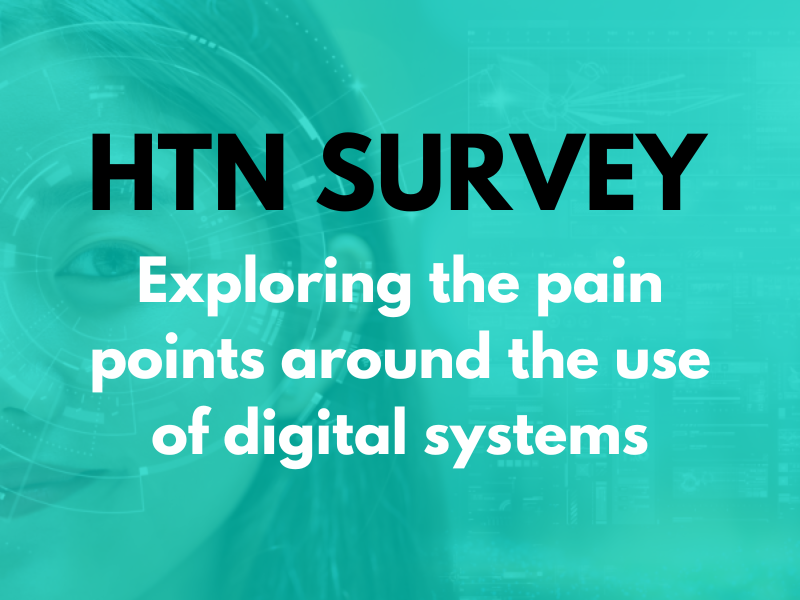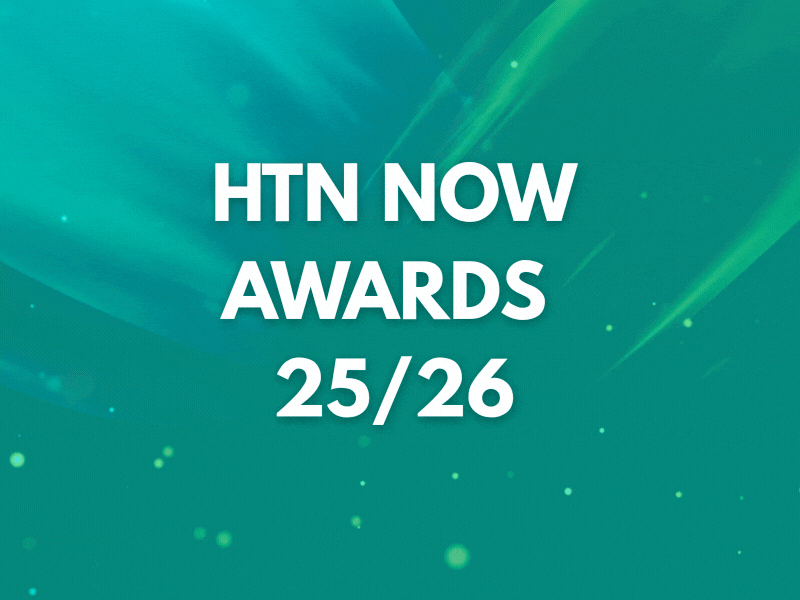For a recent HTN Now webinar on building local digital capability in the NHS, we were joined by Clare Green, transformation manager at Leeds Teaching Hospitals NHS Trust (LTHT), and Mike Odling-Smee, CEO of Aire Innovate, who talked us through how LTHT engages clinicians to shape its in-house electronic health record, supporting flexibility, scalability and resilience across Leeds and the wider region.
Mike has led system architecture in the NHS for more than 20 years, acting as the lead integration architect or advisor on a range of national programmes including NHS Spine, the Interoperability Toolkit, and GP Connect. He founded Aire Logic in 2007 alongside Joe Waller, to provide system build and integration services to the NHS, adopting an agile approach, and going on to become one of the NHS’s largest providers.
Mike and his team then went on to build Aire Innovate, to deliver an open platform that’s equipped with the foundation tools for building, connecting and changing IT systems precisely to meet needs; a platform that has now been adopted by LTHT, as well as by others including Alder Hey Children’s Hospital, Manchester ICS, and Guy’s and St Thomas’.
Clare has 24 years of experience in the NHS, and has developed into a dynamic leader with strong foundation skills in digital, excelling in digital transformation, strategic thinking and collaborative working. With a track record in continuous improvement and leading cross-functional teams, as well as optimising data and analytics, Clare has a deep understanding of the importance of effective stakeholder management and building strong relationships with key partners to achieve buy-in and support the change process.
The Leeds in-house experience
“At Leeds, we want to make sure we’re optimising our digital resources,” Clare said, “and whilst digital technologies have huge potential to improve patient experience, patient safety, and provide easier access to data for research and quality improvements; it’s essential that this is clinically-led and driven.” Effective integration comes down to ensuring digital foundations such as network infrastructure and resilience are appropriately considered and planned, she went on, granting the ability to scale, adapt, and ensure benefits are fully realised.
“In my experience, clinically-led always gets the best results,” Clare went on, “including in adoption of the solution, engagement in identifying improvements, and supporting the measures of benefits.” That process can be challenging, but the team at Leeds implement the Leeds Improvement Methodology for improvement work, and spend time getting to know the landscape and the “need to know”, walking in colleagues shoes and building up a network of contacts to collect useful information and observations. “I went on bi-weekly ward walks, covering all wards, and this gave me the opportunity to observe process, gather input, and understand what the rocks in the shoes of our clinicians were,” Clare shared.
At LTHT, the PPM+ EHR system has been developed and continues to be supported and managed by an in-house team alongside an embedded Aire Logic team, Clare told us. “We use components of Aire Innovate for forms, and that functionality allows us to quickly create new forms to meet service needs, used by 11,000 clinicians to support everyday nursing medical documentation and clinical processes.” Feedback has been positive, particularly about the ability for users to access what they need, when they need it, from one place.
Benefits of in-house capability
Clare moved on to share some of the benefits of in-house capability and flexibility, including the ability to shape and prioritise development, to respond quickly to changing circumstances, and to “be the master of our own destiny”. Clinicians are involved at all stages of the EHR delivery lifecycle, she continued, which ensures prioritisation is clinically driven. “It gives us the ability to identify and exploit opportunities to join up systems and share data with other organisations,” she said, “we can influence our roadmap quickly, access data and reporting, and give clinicians what they need.”
Giving the example of the recent implementation of diagnosis, Clare explained: “Phase one of that was embedding diagnosis within the oncology service, and phase two was to implement it across the whole of LTHT. Initially we’re working with volunteers for early adoption, identifying, tracking and measuring benefits, and this will then become the narrative for why other services should adopt the functionality.” Phase three is still to follow later in the year, she said, which will be around importing GP structured data diagnosis, with benefits including reduced repetition of data input and the sharing of information to inform care.
LTHT’s strategic approach involving listening, discussion and a clear purpose, has offered “significant improvements”, according to Clare. “There are a few enablers for this, including the Office of the CCIO, which sits within DIT and consists of consultants, nurses, midwifery and AHP leads, who support linking us with the CSU digital leaders and enablers, who facilitate ward walks, and who allow us to gather feedback.” The Digital Medical Group, chaired by one of the consultant CCIOs, gives strategic clinical direction to digital, she said, facilitating shared learning and best practice. Working with this group has identified five engaged consultants to embed diagnosis within their services, she went on, “and then from that we will be able to share the benefits and prepare for the next implementation phase”.
The LTHT digital commitment has also helped offer a united focus across the trust, Clare considered, “as together we can create greater impact, shaping a positive and caring environment for our patients and colleagues”. Communication on key messaging is integral, she shared, “as it’s vital to shout about success, gain support and insight for improvements, and encourage wider implementation to bring services along – an effective way of doing that has been at our weekly team meeting”. Forums such as digital advocates and the digital forums available via Microsoft Teams channels, alongside networking across organisations, are also something LTHT has been exploring.
“Transformation at LTHT is a massive, exciting journey, and its success is dependent on clear communication, transparent decision making, getting the right groups of people together to optimise digital, supporting staff effectively and improving patient safety and experience,” she concluded. “Not forgetting the energy and enthusiasm of our workforce, who are always doing the right thing for patients and for improvement.”
The Aire Logic perspective
Clare handed over to Mike, who talked about Aire Logic’s work with LTHT over the last ten years from a consultancy perspective, and the trust’s use of the Aire Innovate platform. “We’ve been working directly with the LTHT team, building PPM+ and working as one on delivering the whole platform,” he said, “and for our staff who have been involved with PPM+ delivery for quite a few years now – if they were a stick of rock and you cut them in half; they’d probably have a bigger LTHT logo than they would Aire Logic.”
The project is personal for Mike, he told us, because in its early years he remembers working on site in one of the converted wards at St James’s. “I remember having a particularly difficult day with technical challenges,” he said, “and I went for lunch and saw a nine-year-old child with no hair, walking along with his drip, and that really brought home just how trivial my challenges were in comparison. This is why we do what we do, and why we really want to improve the outcomes for patients, and also the clinicians working day-to-day to try and deliver excellent care for those patients. I’ve loved being part of that journey with LTHT.”
The Aire Logic team had observed that the traditional way that the NHS and healthcare organisations brought technology into the workplace involved a large procurement process, according to Mike, which might take two years, followed by another two years of implementation. “The reality is, though, that change is constant,” he said. “We need flexibility to deliver continuous change, and we’ve heard from Clare how that has benefited LTHT. Even before we got to AI, technology was moving at such a pace that if the NHS wants to take advantage of that, it needs to be able to support continuous change.”
With the Data and Access Bill currently going through Parliament, there are conversations being driven around medical device regulation in the software space, Mike told us, “so even in the policy space there are lots of things happening, with the three shifts outlined by the government, and every health system in the world is looking for opportunities to improve care delivery”. The key is not to think that buying something and installing it is the end of the process, he continued, “we have to continually change, so all of that philosophy is behind how we’ve put together our digital health platform with Aire Innovate”.
The Aire Innovate platform is designed to digitise, connect and transform the way healthcare is delivered, Mike shared, “and whilst we’re fully supportive of being clinically led, rather than building a system for a given clinical scenario, we turn the problem on its head and ask what the components look like that we can configure to deliver more or less any sort of care or clinical pathway”. In particular, that is true of the digital forms Clare mentioned that are embedded directly into PPM+, he said, “and some of our customers also have a system that connects as a case management system or patient record system”.
The Aire Innovate workflow engine can support anything from simple administrative processes and some automations, through to long-running patient pathways, according to Mike. “One of our key strengths is in the integration and interoperability space, so we’ve got a component that manages that too, but overall these digital lego bricks allow organisations to be self-sufficient and configure our products to their exact needs.” Data consistency is also important, he went on, “and that means you’ve got a very good basis for training and augmenting AI, so we’re preparing for AI to be incorporated into a clinical pathway”.
Some of the ways that LTHT is using the platform include the digital forms, which have been embedded into PPM+ for many years, Mike said, “and that doesn’t mean just switching from paper to digital, but actually that those are optimised for electronic delivery”. Those have seen close to 40 million form submissions per year, he continued, “but as Aire Innovate, we don’t actually know how LTHT have used the platform, because they’ve been self-managing, and have been empowered to do all of this themselves”.
Mike also shared details of an AI that has been trained by Aire Innovate using LTHT data to risk stratify patients “so those at the low-risk end of the spectrum can go down a mainly digital pathway without having to come in and visit the pre-op team”. The Recovery Care Plan is another focus, with LTHT, Leeds Community Health and Leeds City Council all contributing to a central care plan for the patient and having a central, shared view of where that patient is at. “That has improved operational efficiencies, saving the discharge team 25 percent of their day, and as part of a bigger project has been able to reduce average patient stays by half a day.”
Digging deeper into optimisation and prioritisation at LTHT
Clare talked about how LTHT handle the optimisation process and how the team prioritise incoming requests or suggestions. “All of our requests come through what we call the One Front Door,” Clare said. “It’s an expression of interest that goes to our project management office and then representatives from the EHR delivery team, by which point the requests have already had to go through the clinical lead for a CSU, the business manager, and the medical lead, who will have reviewed that request and supported it.” That is then added to a list, and prioritisation of that list is done via Development Steering Group meetings every Monday, she told us, “where there are various representatives who look at them and decide what goes at the top of the list”.
The order is then fed back, Clare shared, “and I usually find that people look at the list and understand why their request has been placed where it has; there are other things which affect safety across the whole trust, whereas theirs may be more departmental, for example”. The way that PPM+ is structured means there are opportunities for a lot of “reusable development”, she continued, “which means we can get through things faster, as we don’t have to start from scratch every time”.
Going back to the example of the Recovery Care Plan, Clare highlighted how it has been designed with the discharge leads who will be using it, and reviewed to consider how it could be made more efficient. “What has been transformational about it has been that it has opened it up so that Leeds Health and Social Care can now view that form and see what actions are needed for a patient; previously, that would have involved calling and trying to get through to someone,” she explained. Since its initial deployment the form has seen the addition of AHP goals, she went on, “looking at whether patients can walk upstairs unaided and practical actions that weren’t part of the process, as AHPs were using their own form”.
The design and its dashboard view is key, according to Clare, in allowing organisations in Leeds to work together and having that visibility. “We’re just at the start of that with external partners,” she said, “but we’re looking at how to give them the ability to edit or add when actions have been taken”. Training hasn’t been an issue, and generally everyone the team has trained to date has agreed that it’s “quite straightforward”, Clare continued, “and as soon as they have done that, they can see the benefit in the information available, and how it can help those who need to see it”.
As well as using the Leeds Improvement Methodology, following rollout the team focuses on gathering feedback for the first two weeks to measure how successful something has been and to go toward benefits realisation, Clare said. “So if there’s something the service is struggling with, we have a two-week period where we feed back the changes and make sure a business analyst works through that, a developer is contacted to make that improvement, and then it can be tested and implemented.” Following that, the team continues to monitor any feedback via its implementation mailbox.
“Running alongside that we have our benefits tracking,” Clare continued, “which will look at the benefits identified and measurables agreed at the start, and track those at the end of the first month, but also because some of the things we implement might not be high use but are still extremely important, it might take a bit longer for those benefits to come through.”
“I’ll just add to that,” said Mike, “because I think one of the fantastic things about having this system built by the NHS, for the NHS, is that regional piece, because actually PPM+ is also in use with the Leeds Care Record, helping grant a collective view of the care going on with patients, bringing in community, mental health, primary and social care; offering a holistic view and supporting collaborative working.”
Culture and engagement
Clare shared how the team at LTHT approach engagement and driving the culture around change, stating that the trust has a strong quality improvement culture, much of which dates back to the introduction of The Leeds Way values, that have since become embedded through its appraisal process. “Following on from that, linking with the Virginia Mason Institute is where our Leeds Methodology came from, and that’s shifted the culture to this standard methodology of improvement – weekly report-outs, the Friday Focus sessions, linking in with our seven commitments, so there’s a strong strategic direction that filters through each of the different layers of the organisation.”
The alternative to that is when something organically grows, Clare went on. “An example of that would be specialist referrals. We piloted that in a few areas that really benefitted, and then we didn’t even need to do any comms around it, because colleagues were coming to us and asking whether they could use it. If we had put out comms we would have created a massive waiting list, so we let it organically grow and at last count we’ve got about 280 teams using specialist referrals.” There are also opportunities from linking with improvement schemes within the trust, Clare explained, like with the outpatient transformation team, who want to change their referrals. “It’s about linking-in to where those main drivers are for optimising the change,” she said.
It’s been the trust’s seven commitments, and the CSUs having to report on progress against those, which has “really changed the landscape”, according to Clare. “I’ve been in this role for three years, and when I first joined it was like knocking on closed doors, but as soon as those commitments came in, including the one for digital, those doors have been open, and people have been wanting to work with us.”
Key takeaways
Mike considered what his key takeaways would be, stating: “I think we’ve got to accept that change is inevitable and ongoing, and we don’t actually know what the destination looks like. It’s important to bear that in mind when looking at potential new systems for your organisation, to help make sure you’re not going to purchase something that ends up being a bit of a straitjacket for those changes that you need to make further down the line.”
“For me, it’s all the elements of strategy, transparency, visibility, benefits tracking and limitless energy to enable the implementation of any feature across the organisation,” Clare summed up.
We’d like to thank Clare and Mike for taking the time to share their insights and experiences with us on this topic.






